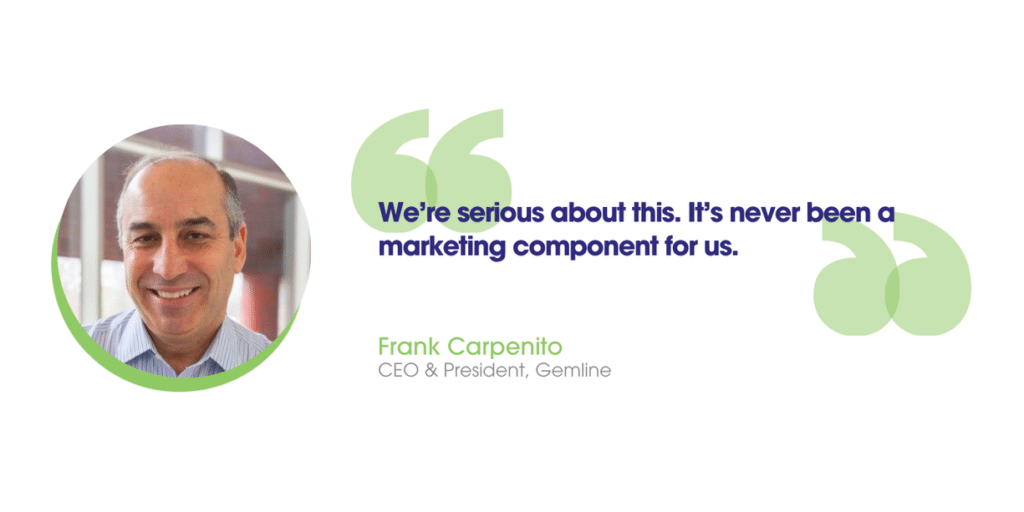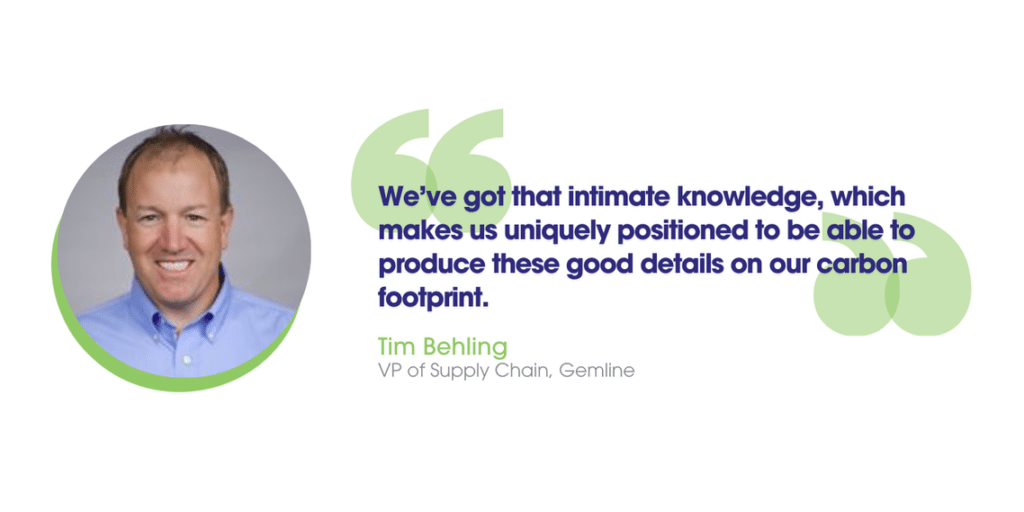More than 1,000 data points.
That’s the complexity involved in Gemline’s (PPAI 113948, Platinum) carbon footprint data tracking for more than 100 products. And the Massachusetts-based supplier is only getting started.
PPAI 100’s No. 11 ranked supplier wants customers, distributor partners and end users to hold a Gemline product in their hands and be able to quickly discover its carbon footprint and emissions data. This knowledge unlocks a new set of motivations and determinations behind the purchasing decisions of distributors and their end-user clients.
This is all part of building up a foundation of knowledge to enable suppliers and their partners and customers to focus on Scope 3 emissions, the most difficult carbon subset to both account for and eliminate.
“Scope 3 emissions encompass all indirect emissions that occur in a company’s value chain, including everything from business travel and employee commuting to supply chain activities,” says Elizabeth Wimbush, PPAI’s director of sustainability and responsibility. “They are not precisely part of your operations, but they still contribute to your overall footprint.”
Gemline’s degree of transparency, known as “cradle-to-gate,” will break down the material components – anything from the thread, fabric and zipper of a simple tote bag to a backpack with potentially 25 or 30 different components – and measure CO2 in kilograms for display on the product pages of Gemline.com.
“You not only have material, but you have location of manufacturing,” says Tim Behling, Gemline’s VP of supply chain. “We’re all throughout Southeast Asia, so it may not be all China based manufacturers; it could be Cambodia, maybe Pakistan. Then you’ve got material transportation to that location”
- Gemline has debuted this initiative with approximately 100 products, mostly top-selling items. The goods included represent a broad cross section of the supplier’s range of offerings, such as coolers, padfolios, duffle bags, backpacks and tote bags.
- The plan is to continue to build up data points within the program in order to provide this information for more and more products.
Why Gemline Took This Step
For Gemline, 2024 has been about telling the world what the company values and putting action behind those values.
- In March, the supplier revealed its new purpose statement, “We Promote Community.”
- A few months later, Gemline officially reincorporated as a public benefit corporation, requiring it to provide bi-yearly reports on the progress of its stated social goals.
“It was really just a reaffirmation and then raising the bar of accountability on ourselves with our stakeholders, with our customers, our employees, our suppliers, our community.” says Frank Carpenito, CEO and president of Gemline. “We’re serious about this. It’s never been a marketing component for us.”
- Beyond Gemline’s core purpose and fiduciary responsibility as a public benefit corporation, Carpenito says that the industry is rapidly approaching a market and labor force in which such transparency is to be expected from a leading supplier.
“Gen Z aren’t sitting in the key decision seats in our industry quite yet, but they’re having quite a significant influence within their companies,” says Carpenito.
Carbon tracking through data analysis (and third-party validation) as a means to eliminating carbon emissions where possible is replacing carbon offsets as the most responsible approach in the minds of many decision-makers across industries.
“We understood that we need to get there sooner rather than later because the second that the market starts saying they want to understand the impact at the product level, we also need to understand it,” says Carpenito. “And then we also need to be able to measure how we affect it each year.”

“Uniquely Positioned” For Such A Task
The goal, for Gemline, is to not simply collect data on carbon production but be able to say that 12 or 18 months later they used that information to take responsible action.
It all starts and is unlocked, however, by the ability to track carbon emissions – not just as a company but on the product level. It’s a monumental task, but it’s one the company felt prepared to take on.
Gemline’s operations focus on both design and development. Along with its domestic team in Lawrence, Massachusetts, there’s a technical center in Shenzhen, China, which allows the company to understand and trace back specific materials to factories and second tier suppliers. This setup has proven advantageous for the company’s supply chain operations and in reaching its carbon tracking goals.
“We’ve got that intimate knowledge, which makes us uniquely positioned to be able to produce these good details on our carbon footprint,” says Behling.

Where To Go From Here
The initial 100-plus products with public carbon data information represent only the beginning of this journey. That number is expected to double for the supplier before the end of the summer.
The plan is complete and accurate transparency with newly launched products.
“I think our goal would be in the future, as we make this process more robust, is that we have these new items coming right out of the gate with carbon footprinting right away,” Behling says.
Along with that goal, there is a more abstract mission, and it’s learning how to discuss these accomplishments with distributors and their customers. The accomplishment likely won’t be appreciated by every customer immediately, but the impact it will make on the ones who understand its value is perhaps immeasurable.
“We’re excited we could lead on this and help some people be able to now go back to their customers and say, ‘hey, we’ve got a starting point, we’re not completely there, but expect more to come,’” says Carpenito.


